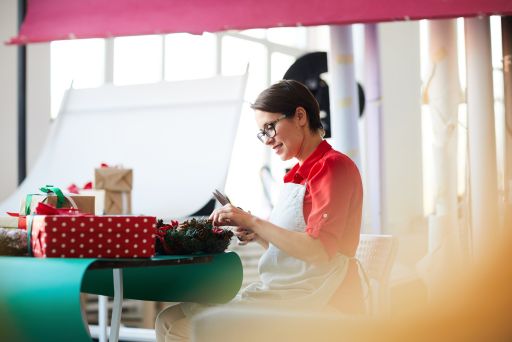Trying to recover after a natural disaster is incredibly overwhelming. But, trying to get your business to recover can be a whole new headache. Using an external accountant, an accountant that doesn’t work from your office, can be beneficial because it’s one less thing on your plate. An external accountant can help take some of the load off and help you get your business back on track.
Here are a few ways an external accountant can help you and your business through a natural disaster.

An External Accountant Will Have Your Records
Damage to your office can mean that you lose a lot of important documents. As you know, documentation is an important part of taxes and bookkeeping. If you’ve lost your documentation, you may be in trouble when you need to claim a tax deduction; however, an external accountant can come to the rescue.
When you use an external accountant, you normally send them documents showing purchases, income, and more. Which means there is a backup of all of your documents in another location. Because of this your accountants can replace those lost documents.
If you’re in the opposite situation, where your accountant’s office is in a natural disaster, then you are still covered. The IRS grants you a filing extension, which we’ll go into more in depth later.
Accountants Can Help You Find Natural Disaster Tax Credits
Tax credits are available to business that have suffered from natural disasters. In order to qualify for tax credits or deductions, the president has to declare your area as a “federally declared disaster area.”
One of the credits available to business owners in a natural disaster is the natural disaster casualty loss break. The casualty loss break allows people who have been affected by a natural disaster to file an amended tax return on the previous year’s taxes. This is helpful so that people can get a refund quickly, instead of waiting until the next tax season. The rules for casualty loss differ between business and personal property, so make sure you talk with your accountant and find out exactly what your business needs to do to use the tax credit.

You will need to assess and document the following areas in order to take advantage of disaster tax credits.
- Determine and list all of your property that was destroyed or damaged in the disaster.
- Find out the original cost (or the adjusted cost) or each damaged item.
- Learn the fair market value of the items before the disaster struck. (What were they worth?)
- Determine the current worth of the property.
- Add up the reimbursements and/or other payments you have received, or plan to receive, from insurance.
External Accountants Can Help You File Taxes on Time
To ease the burden on victims of a natural disaster the IRS can extend tax filing dates. When IRS does extend filing dates, it only applies to areas designated as federal disaster zones. The IRS has already issued tax extensions for victims of Hurricanes Harvey and Irma.
After a federally-declared natural disaster, the IRS allows businesses more time to send in payroll taxes and returns. As long as you send them in before the new deadline, the IRS will wave any penalties or interest that may have accrued.

Whether the IRS has granted your natural disaster a tax extension or not, an external accountant, like Vyde, can help you get your taxes in on time.
FAQs
What are the benefits of using an external accountant after a natural disaster?
An external accountant helps reduce your stress by managing your financial recovery. They can access and replace lost records, help you claim disaster-related tax credits, and ensure timely tax filing even during challenging circumstances.
How can an external accountant assist if my business records are lost in a disaster?
External accountants typically store digital copies of your records. If your physical documents are destroyed, they can provide replacements, ensuring you have the necessary paperwork for taxes and insurance claims.
What natural disaster tax credits can my business claim, and how can an accountant help?
Your business may qualify for tax credits like the casualty loss break if your area is declared a federal disaster zone. An external accountant can guide you through the process, helping you assess damages, document losses, and file for tax credits.
What happens if my accountant is also affected by the natural disaster?
If your accountant is impacted, the IRS typically grants tax filing extensions for federally declared disaster zones. An external accountant can still manage your tax filing to ensure compliance, even with extended deadlines
Can an external accountant help me meet tax deadlines during a disaster?
Yes, they can. External accountants stay updated on IRS extensions and ensure you meet revised deadlines. They’ll manage the filing process so you can focus on recovering your business.






























 Most business owners devote 80% of their time to their business and 20% to the family or social lives. Which means they don’t leave time for themselves.
Most business owners devote 80% of their time to their business and 20% to the family or social lives. Which means they don’t leave time for themselves. Along with fitness, eating healthy is an important habit for success. It goes hand in hand with exercise, you really have to use both to be healthy.
Along with fitness, eating healthy is an important habit for success. It goes hand in hand with exercise, you really have to use both to be healthy.
 We alluded to this in the previous habit for success, but it’s so important that it deserves it’s own subject!
We alluded to this in the previous habit for success, but it’s so important that it deserves it’s own subject! Being thankful might seem like an odd habit for success, but it’s the most important one.
Being thankful might seem like an odd habit for success, but it’s the most important one.

